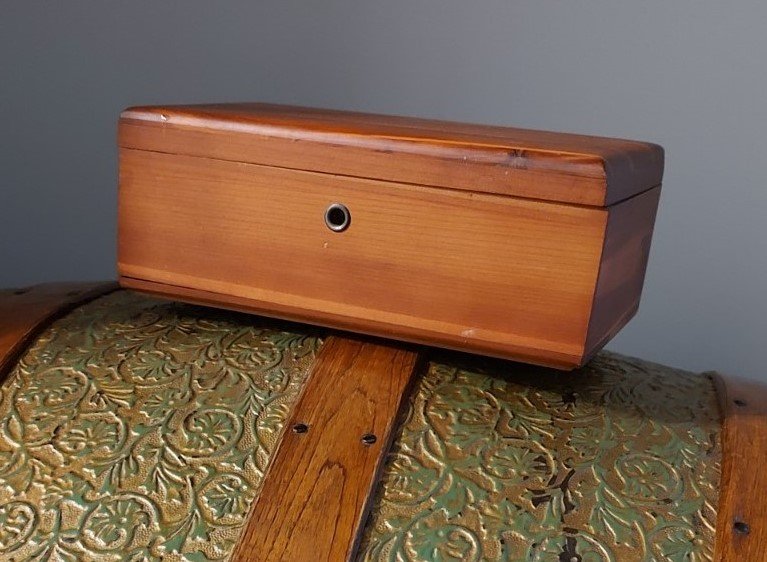Hope in a Box
Yesterday was Valentine’s Day and everywhere I went, crowds of people were buying flowers. In one shop, an employee was unboxing large sprays that hardly seemed they could have survived travel. Outside another shop with a booming flower trade, a family was selling bouquets from buckets on a verge of grass in the parking lot. Cards and candies no doubt had their moment but yesterday seemed full of flowers.
What a change it must have been from Valentine’s celebrations during World War II. For millions across the globe, it would have been impossible to give flowers. In England, most flower gardens had been destroyed to make way for victory gardens. In Holland, starving Dutch citizens survived partially by eating flower bulbs. With sugar heavily rationed and imported cocoa difficult to obtain in many parts of the world, sweets were mostly a dream. But no matter what the gift, there was no way to give it when impassible miles—and sometime oceans—separated lovers. Cards were one of the most popular choices between sweethearts, with notes of love helping to ease the pain of longing.
The Beginnings of Hope
There was one other item in heavy demand for 1940s Valentine gifts: Lane cedar chests. This Virginia (USA) company opened for business near a railroad junction shortly before the First World War. Its location became a great asset when war began. Lane aided the war effort by making pine ammunition boxes. The finished products, like the raw materials, were easily transported by rail. Wartime demands forced the company to develop a quick assembly system to produce enough boxes for shipment.
The company’s location and assembly system were the foundation of a different kind of aid by the time the Second World War began. Between wars, the Lane Company focused on its business of creating exquisite cedar chests. For fun, employees began making a tiny version of these with bits of leftover wood. These miniature chests became so popular among young girls for storing jewelry and love letters, they ended up becoming Lane’s premier marketing tool.
Cards for a free miniature cedar chest were given to young women graduating from high school. This, during an era when most would marry within a year or two of graduation. The cards could be redeemed at local furniture stores, drawing future young homemakers into shops where full-sized cedar chests were on display. These beautiful pieces of furniture were advertised as the ideal beginning, where a young woman could store items for her future home after marriage. The “Hope Chest” was born.
Shirley Temple was hired by Lane to advertise these magnificent symbols of hope. Full-page ads in magazines presented the chests as the greatest possible gift to cement a relationship. Following the attack on Pearl Harbor, thousands of young servicemen wanted to give their sweethearts a Lane cedar chest. This one item became the symbol of true commitment. Lane cedar chests were a solid reminder of the sweetheart who had gone away to war. They were a pledge and a comfort to the one leaving for battle and to the one waiting at home. They became synonymous with a promise for the future, for love, home and a family.
Memories of Love
My mother received her miniature cedar chest upon graduation and still remembers that time vividly. Even years after World War II, hope chests were popular. They gave young girls a concrete way to dream and hope for their own future homes and families. My mother and grandmother started my hope chest for me, adding china and flatware from year to year. I even had an electric griddle in there by my tenth birthday! Once in a great while, I would set up our card table in my bedroom and unpack all of the gorgeous pieces, arranging the table of my dreams. And just this year I pulled a long-stored, handmade bedspread from its depths to refresh our guest room.
My hope chest wasn’t given by a sweetheart but by two of the people I love most, who found joy in collecting special items to fill my future home—which turned out to be an apartment I rented as a single working woman. To this day, it rests in a prominent place in my living room and continues to store special treasures. Oddly enough, most of those are cards I’ve kept through the years, to read again in old age should I be blessed to have that. There is no more china, and the electric griddle long ago died, but whenever I see my hope chest, it still brings a sense of joy for the future.
References
Oeltjenbruns, Becky. 2016. “History of Lane Furniture: 1930-1940.” causeafrockus.com, May 18, 2016.
Lane cedar chest advertisement. Life Magazine Vol. 18 No. 5 (January 29, 1945): 61.
“Hope deferred makes the heart sick, but a desire fulfilled is a tree of life.”
Proverbs 13:12


